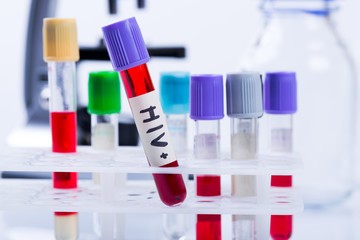

Sherry Dubois
Supporter of HerpesSingle.net
10w ago
Researchers have made serious strides and now better understand the mechanism behind herpes outbreaks. But the bad news is that there is very little funding for that research.
We reached out to a leading herpes expert, Bryan Cullen, the director at the Center for Virology at Duke University. Cullen is hopeful that a cure for herpes could come within 10 years, once funding hurdles are crossed.
Nearly one in five people over age 12 in the U.S. is affected by herpes. It is caused by a virus – either the herpes simplex virus type 1 (HSV-1) or the herpes simplex virus type 2 (HSV-2). Both strains can cause genital herpes, but HSV-1 usually infects the mouth and produces cold sores.
Despite funding challenges, Cullen and his team are inching closer to a cure. They conducted a study recently that identified the pathway herpes takes as it infects. They now know how herpes embeds itself into the cells and how it eludes treatment. Now that they have honed in on the physiology of the disease – and its triggers – researchers believe they are steps closer to creating drugs that could cure herpes.
While we wait for a cure, there are drugs out there that can at least suppress herpes. Three antiviral drugs: acyclovir, valacyclovir, and famciclovir are commonly recommended to quell outbreaks. A physician might recommend taking these drugs when an outbreak occurs to quiet symptoms; or taking them continuously to reduce the likelihood of an outbreak.
And of course the best way to avoid spreading herpes is to abstain from sex, but if you are sexually active, engage in safe-sex practices such as using condoms.

Grant Robinson
Synthetic Biologist
299w ago
If I was forced at gunpoint to make a guess, I would say, “no.” The reason is that vorinostat is apparently inducing cellular differentiation. As discussed below, HIV primarily remains latent in CD4+ memory or naive T-cells. The reason why it doesn’t hang around in activated cells is that the transcription factors working in those cells cause the virus to be transcribed, ultimately resulting in apoptosis. “Activated” T-cells are more differentiated T-cells. There’s a nice table in the review article below that points to specific transcription factors that are required for repression of this differentiation- all of which are controlled at least in part by specific HDACs (namely 1 and 2 for the factors that inhibit cellular differentiation). Knock those out and the cell can differentiate, resulting in transcription of the virus and lysis of the cell- after which point standard antiretrovirals can wreak havoc on the HIV.
I must say that it’s an absolutely ingenious method. There isn’t technically any in vivo data about the activity of vorinostat in astrocytes (nervous system cells that HIV can also infect), but there is apparently in vitro data that demonstrates it does in fact activate astrocytes.
An excellent review discussing HDAC inhibitors in HIV, and the source of pretty much everything mentioned above:
Now, herpes simplex is a lentiviral RNA virus just like HIV, but latent infection with herpes is confined largely to neurons. Its method of latency is also at least partly RNA-based, and the few transcription factors it does appear to depend on are neural rather than involving the more common factors, like NFkB, involved in HIV transcription. For more about latent infection with herpes, see this Wiki article:
It’s pretty fair to say that unlikely naive/memory CD4 cells, neurons *don’t* differentiate into anything more terminal. This coupled with the fact that different mechanisms for latency/lysogeny appear to be in play would lead me to conclude that vorinostat and other HDAC inhibitors probably wouldn’t work to draw out a herpes infection. From genome size (HIV has a genome of about 10 kilobases, herpes simplex about 150 kilobases) to lysogeny methods, the two viruses are rather different.

Zachary Williams
Postdoctoral researcher, microbiology, Tufts University
274w ago
Just to note, herpes simplex is not a lentivirus or an RNA virus. It is a DNA virus, essentially completely unrelated to HIV. It is *conceivable* that HDAC inhibitors could also work with herpes latency, but my impression (From a long distance- the only herpes folks I know don’t study latency or talk about it much.) is that it is very poorly understood phenomenon, even compared to HIV latency. That said, histone deacetylases may be involved, so you could get lucky.
Also, on the HIV ‘cure’…way too soon to call it a cure. HDAC inhibition is a great idea and it’s exciting to see a proof of concept in vivo, but: the patients weren’t cured (not that they tried), it didn’t work for everyone, and until they actually take the next step and try to cure patients, we won’t know if it really works for anyone.

Cat Thompson
20-year HSV veteran, support leader and co-administrator at National HELP, owner of H-Book
164w ago
No – the two viruses are completely different organisms, behaving, living and traveling in the body using entirely different systems. HSV inhabits the nerve bundles and uses the nerve cells to travel, whereas HIV inhabits the fluids.
I would also posit that Bill Gates would not be as interested in addressing the eradication of a primarily non-fatal condition such as HSV, having far more life-impacting projects to pursue.

Jene Tarel
161w ago
There are two types of herpes simplex virus: HSV-1 and HSV-2. Both virus types can cause sores around the mouth (herpes labialis) and on the genitals (genital herpes). Cold sores are caused by the herpes simplex virus (HSV).
Cold sores sometimes called fever blisters, are groups of small blisters on the lip and around the mouth. The skin around the blisters is often red, swollen, and sore. The blisters may break open, leak a clear fluid, and then scab over after a few days. They usually heal in several days to 2 weeks.
The herpes simplex virus usually enters the body through a break in the skin around or inside the mouth. It is usually spread when a person touches a cold sore or touches infected fluid—such as from sharing eating utensils or razors, kissing an infected person, or touching that person’s saliva. A parent who has a cold sore often spreads the infection to his or her child in this way. Cold sores can also be spread to other areas of the body.
Original site on Quora
ATTENTION! ATTENTION!! ATTENTION!!! ADVERTISE ON TOKTOK9JA AND REACH OUT TO YOUR DESIRED AUDIENCE: HERE
Discover more from TOKTOK9JA MEDIA
Subscribe to get the latest posts sent to your email.






















![Atletico Madrid arrive Nigeria ahead of Super Eagles friendly [PHOTO]](https://toktok9ja.com/wp-content/uploads/2018/05/Torres-in-Nigeria-May2018-1-150x150.jpg)






